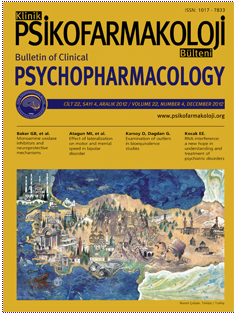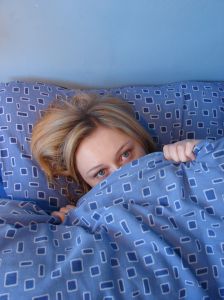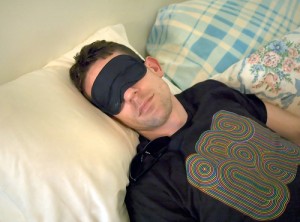
Photo by: {link:http://www.flickr.com/photos/jaypoct/}jpo.ct{/link}
Health and wellness is increasingly getting popular for many people, not just the young and active, but even for the elderly. The surge in health food supplements, healthy diet concoctions, various exercise programs like pilates, aerobics, and most recently zumba fitness are clear indications that more people are into healthy living nowadays.
For a person’s body to be able to work and function properly, regular exercise should be kept as part of one’s daily activities. This is notwithstanding the other healthy lifestyle habits one has to inculcate in one’s self to be able to have a good physical and mental well being. Surely, at some point in time, you have felt better and invigorated after a good exercise regimen or even just a walk around the block. Exercising can take many forms: a workout in the gym, a lap or two at the running tracks, a swim at the pool, an early morning or evening walk around the park or an hour of zumba fitness in the health club. Whatever form it is, exercise helps to keep the body and mind healthy and active.
People used to exercise to keep their body in good shape. These days, some people exercise to have a good emotional and mental well-being, as exercise can help improve depression, anxiety, self-esteem, drive away problems, and give a sense of control.
In general, people who are physically active tend to have less anxiety, depression, and stress than people who are sedentary. Research suggests that exercise can help specific mental health problems. A relapse of depressive symptoms may be prevented if a person keeps a regular exercise regimen.
If we take into account today’s world of household and office or work-related chores being automated, it is clear that there is a greater need to keep regular exercises in the daily routine. There is less and less physical activity because almost everything is on automatic mode. And a sedentary lifestyle may bring about a lot of problems not just in one’s body but also in mind such as depression, low energy, poor motivation, etc.
Effects of No Exercise
People who lead a life with limited physical activity are more likely to develop:
- Depression or low morale
- Tension
- Anxiety
- Sleeping problems
- Memory problems
Benefits of Exercise
Knowing that exercise has helpful effects on the brain even for the elderly, one should be able to get some exercise even for a short duration few times each week. Exercise is said to have good effects and benefits on one’s mental health; improving brain functions of the older people, and preventing and slowing dementia. There are research studies that show that exercise increases the level of brain-derived neurotrophic factor or BNDF, a substance that is said to improve mood and help brain cells live longer.
The treatment for some mental disorders and illnesses include exercise and keeping a healthy lifestyle. Exercise has been linked to significantly reduced symptoms of two of the common mental conditions, depression and anxiety disorders. Physical activity has been consistent in causing enhanced physical condition, life contentment, cognitive functions, and psychological or emotional state. Because of these findings, doctors have prescribed exercise as the first line of treatment for mild depression and anxiety disorders.
Other forms of exercises like aerobics, jogging, swimming, cycling, dancing, etc., have been proven to reduce anxiety and depression which is caused by the increase in blood circulation to the brain and by an influence of the hypothalamic-pituitary adrenal (HPA) axis on the physiologic reactivity to stress. The HPA axis gives communication signals or messages to the different regions in the brain including the limbic system which is associated with motivation and mood; the amygdale which is associated with generating fear in response to stress, and hippocampus which plays role in memory formation including mood and motivation.
Patients with schizophrenia also benefit from exercise showing improvements on weight control, reduced blood pressure levels, increased energy levels, etc.
Other health benefits derived from regular exercise include:
- Improvement in quality and duration of sleep
- Enhanced endurance
- Relief from stress and worrying
- Better mood
- Invigorated strength and energy
- Reduced fatigue
- Improved mental alertness and focus
- Decrease in cholesterol levels
- Improved cardiovascular condition
Patients suffering from some serious mental illness could benefit from exercise interventions as a helpful treatment along with psycho-pharmacology and psychotherapy.
Helpful Tips to Remember when Exercising
Any form of exercise should be done in moderation for safety reasons. It is a good idea to talk your doctor before starting exercise. Following these simple tips will get you through a good physical activity:
- Start slowly. A moderate level of exercise is a good way to start. Increasing the activity should be in stages to allow the body to absorb the physical strain caused by the exercise.
- If the activity is causing severe pain, especially chest pain or severe breathing problems, discontinue the exercise. Shift to a lighter activity. If pain symptoms continue to manifest, call or visit your doctor.
- Start with simple physical activity like walking, cycling, swimming, or short-distance jogging. You should not push your body in the early stages of the exercise program.
- Test your exercise level using the talk-sing test. You are doing okay if you can talk during exercise; if you can sing during exercise, you should increase the activity level; if you are not able to talk, you need to slow down and decrease your activity level.
- Allow a 5-minutes cooling down after exercise. Light stretching may be done during the cool-down period.
- Drink water, before and after the exercise.
- Moderate exercise for a total of 2-1/2 hours in a week should work your body fine
Make daily activities part of your exercise program. You can:
- Walk to work or to do errands.
- Mowing the lawn, raking leaves or shoveling snow
- Sweeping or vacuuming
- Taking the dog for a walk or engaging in play activities with children
Remember that exercise is not just for those who want to keep in shape and to be physically fit. It helps with one’s emotional and mental well-being, too. When stressful situations arise, a good 30-minute exercise may help improve your emotions and alleviate your mind of the stress. It is a good way to improve your self-esteem and have an optimistic and better outlook in life in general.
]]>
 From DrDal’s recent Editorial at the “Bulletin of Clinical Psychopharmacology”:
From DrDal’s recent Editorial at the “Bulletin of Clinical Psychopharmacology”: People of the world have varying sleep patterns. Most experts agree on the fact of the usefulness of having eight hours of uninterrupted sleep. However, modern life styles at work, home, and social settings have brought many limits on sleep time and recent technological developments have further decreased sleeping hours. About 41 million Americans representing a third of all working adults get less than the prescribed eight hours of sleep. In fact, in a report from the Centers for Disease Control and Prevention, this portion of the working American population gets six hours or less of sleep per night. The reasons are attributed to a host of factors that prevent them from getting adequate amount of sleep.
People of the world have varying sleep patterns. Most experts agree on the fact of the usefulness of having eight hours of uninterrupted sleep. However, modern life styles at work, home, and social settings have brought many limits on sleep time and recent technological developments have further decreased sleeping hours. About 41 million Americans representing a third of all working adults get less than the prescribed eight hours of sleep. In fact, in a report from the Centers for Disease Control and Prevention, this portion of the working American population gets six hours or less of sleep per night. The reasons are attributed to a host of factors that prevent them from getting adequate amount of sleep.
 People normally worry about life in general – health, finances, family, or work-related problems. However, if the person’s worrying becomes so intense that it limits him or her from functioning properly, the symptoms might meet the criteria for Generalized Anxiety Disorder or GAD.
People normally worry about life in general – health, finances, family, or work-related problems. However, if the person’s worrying becomes so intense that it limits him or her from functioning properly, the symptoms might meet the criteria for Generalized Anxiety Disorder or GAD.


 Self-compassion is giving yourself the treatment you would normally give to a dear friend. Feeling compassionate about yourself has no difference in feeling compassionate for others. In order to be compassionate, you have to notice that they, the other people, are suffering. Only if you appreciate and take a better look at the difficult situations of other people can you show compassion to that person.
Self-compassion is giving yourself the treatment you would normally give to a dear friend. Feeling compassionate about yourself has no difference in feeling compassionate for others. In order to be compassionate, you have to notice that they, the other people, are suffering. Only if you appreciate and take a better look at the difficult situations of other people can you show compassion to that person.
 Every person experiences stress at some point in time. Some tolerate and manage it well, some cannot. Because people have different thresholds for stress and use different coping mechanisms, the impact of stress on their physical and mental well-being varies.
Every person experiences stress at some point in time. Some tolerate and manage it well, some cannot. Because people have different thresholds for stress and use different coping mechanisms, the impact of stress on their physical and mental well-being varies.
 Face blindness or prosopagnosia impairs a person’s ability to recognize faces. A married man can wake up every day not recognizing his wife who he was sleeping with in the same bed for years. This is not a problem with his memory because if he hears her or his wife’s name is mentioned, he knows her pretty well.
Face blindness or prosopagnosia impairs a person’s ability to recognize faces. A married man can wake up every day not recognizing his wife who he was sleeping with in the same bed for years. This is not a problem with his memory because if he hears her or his wife’s name is mentioned, he knows her pretty well.
 Attention Deficit Hyperactivity Disorder or ADHD in children may manifest symptoms that are similar to sleep disorders. Some of the shared symptoms are : restlessness, over-active behavior and lack of focus or attention. Children apparently have the opposite reaction or response when sleep is disrupted. While adults with sleep problems tend to become less active and weak, children are the opposite. They become hyperactive to an extent.
Attention Deficit Hyperactivity Disorder or ADHD in children may manifest symptoms that are similar to sleep disorders. Some of the shared symptoms are : restlessness, over-active behavior and lack of focus or attention. Children apparently have the opposite reaction or response when sleep is disrupted. While adults with sleep problems tend to become less active and weak, children are the opposite. They become hyperactive to an extent.
